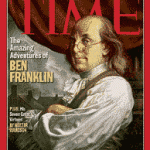 To many kitefliers and to the rest of the non-flying world Benjamin Franklin is considered “The Worlds Most Famous Kiteflier” all because of his Electric Kite Experiment in 1752. My initial “serious” encounter with Franklin and his kiteflying came in January of this year when I began looking for a picture of Franklin flying his kite to place on the home page of our local e-group KITEFLIER-MIDWESTto celebrate Ben’s birthday. (January 17th)
To many kitefliers and to the rest of the non-flying world Benjamin Franklin is considered “The Worlds Most Famous Kiteflier” all because of his Electric Kite Experiment in 1752. My initial “serious” encounter with Franklin and his kiteflying came in January of this year when I began looking for a picture of Franklin flying his kite to place on the home page of our local e-group KITEFLIER-MIDWESTto celebrate Ben’s birthday. (January 17th)
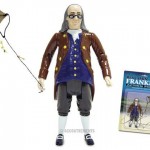 There are literally hundreds of pictures and likenesses of Franklin flying his kite. As I looked through all of these items I noticed what I assumed was “artistic” license when depicting the actual design of the kite. Some pictures had the flying line connected to the bottom of the kite or to the top. I noticed errors in the depiction of the kite that any “advanced” kiteflier could see would make the kite “non-flyable” To all of us in the kiteflying community this “Artistic Error” is nothing new. Even Charlie Brown’s kite in most of the Schultz cartoons isn’t bridled right!
There are literally hundreds of pictures and likenesses of Franklin flying his kite. As I looked through all of these items I noticed what I assumed was “artistic” license when depicting the actual design of the kite. Some pictures had the flying line connected to the bottom of the kite or to the top. I noticed errors in the depiction of the kite that any “advanced” kiteflier could see would make the kite “non-flyable” To all of us in the kiteflying community this “Artistic Error” is nothing new. Even Charlie Brown’s kite in most of the Schultz cartoons isn’t bridled right!
So, I set out to find Franklin’s own notes, and possibly even a diagram of his kite. I found very little in Franklin’s own words, and considering the fact that Franklin was a scientist and kept lengthy and detailed notes on all his other research, and experiments in electricity, this seemed very unusual!
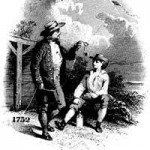 The original notice of the “Electric Kite Flight” was published in October of 1752, in the Pennsylvania Gazette (A colonial newspaper owned and edited by B. Franklin) the article related that Benjamin Franklin had flown an electric kite in July of 1752. (The author – Ben Franklin.) Franklin also sent a copy to his friend in England, Peter Collinson, who was then to present it to the Royal Society (The highest scientific body in England in the 1700s) A letter via sailing ship in 1752 to England took four months. The Society took another six months and finally published the letter in their monthly journal “Philosophical Transactions”
The original notice of the “Electric Kite Flight” was published in October of 1752, in the Pennsylvania Gazette (A colonial newspaper owned and edited by B. Franklin) the article related that Benjamin Franklin had flown an electric kite in July of 1752. (The author – Ben Franklin.) Franklin also sent a copy to his friend in England, Peter Collinson, who was then to present it to the Royal Society (The highest scientific body in England in the 1700s) A letter via sailing ship in 1752 to England took four months. The Society took another six months and finally published the letter in their monthly journal “Philosophical Transactions”
This is the first account authored by Ben Franklin of his kite experiment in the “Philosophical Transactions” published in 1753 in England:
“As frequently mentioned is made in public papers from Europe of the success of the Philadelphia experiment for drawing electric fire from clouds by means of pointed rods of iron erected on high buildings, it may be agreed to the curious to be informed, that the same experiment has succeeded in Philadelphia, tho’ made in a different and more easy manner, which anyone may try, as follows:
Make a small cross, of two light strips of cedar; the arms so long, as to reach to the four corners of a large thin silk handkerchief, when extended: tie the corners of the handkerchief to the extremities of the cross; so you have the body of the kite; which being properly accommodated with a tail, loop, and string, will rise in the air like those made of paper; but this, being silk, is fitter to bear the wet and wind of thunder gust without tearing.
To the top of the upright stick of the cross is to be fixed a very sharp pointed wire, raising a foot or more above the kite. To the end of the twine, next (to) the hand, is to be tied a silk riband; and where the twine and silk join, a key may be fasten’d. The kite is to be raised, when a thunder-gust appears to be coming on, (which is very frequent in this country) and the person, who holds the string, must stand within the door, or window, or under some cover, so that the silk riband may not be wet; and care must be taken, that the twine does not touch the frame of the door or the window”
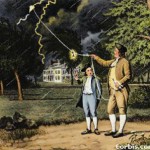 The rest of the letter from Franklin relates the completion of the experiment and results that confirms one of his “theories of electricity” Prior to the 1752 “Electric Kite Flight” Franklin had performed detailed and documented experiments into the nature of electricity. He is credited with the invention and now common electrical terms such as – battery, positive, negative, current and poles. Franklin created static electricity using several different devices. He constructed a large hand powered device which created “electricity.” He learned that this “electricity” could be transmitted through wires, it could be stored in a device called a Leyden Jar. Electricity could be measured and its effects seen analyzed and recorded.
The rest of the letter from Franklin relates the completion of the experiment and results that confirms one of his “theories of electricity” Prior to the 1752 “Electric Kite Flight” Franklin had performed detailed and documented experiments into the nature of electricity. He is credited with the invention and now common electrical terms such as – battery, positive, negative, current and poles. Franklin created static electricity using several different devices. He constructed a large hand powered device which created “electricity.” He learned that this “electricity” could be transmitted through wires, it could be stored in a device called a Leyden Jar. Electricity could be measured and its effects seen analyzed and recorded.
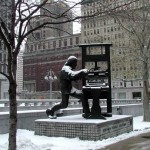 Franklin theorized that Lightening in a storm was just a larger form of this power he was currently experimenting with. Franklin amazed the scientific world with this account of his kite experiment. What was even more amazing was that he used a simple children’s toy as the basis of this important discovery. In my research I found no other reference in any Franklin writings to the Electric Kite Experiment of 1752 until 1766 when Franklin sends an account of his experiment to his friend and colleague, Joseph Priestly, which Priestly recounts in one of his own papers, which is an almost exact reprint of the 1752 article!
Franklin theorized that Lightening in a storm was just a larger form of this power he was currently experimenting with. Franklin amazed the scientific world with this account of his kite experiment. What was even more amazing was that he used a simple children’s toy as the basis of this important discovery. In my research I found no other reference in any Franklin writings to the Electric Kite Experiment of 1752 until 1766 when Franklin sends an account of his experiment to his friend and colleague, Joseph Priestly, which Priestly recounts in one of his own papers, which is an almost exact reprint of the 1752 article!
No other reference by Franklin is made about the experiment or can be found anywhere else. All the European and Colonial news papers and scientific journals of the time only repeated his initial report from 1752 and the one published by the Royal Society of England in 1753.
The highest scientific body in the world at the time was the Royal Society in England. This was a very prestigious body of scientific learning. At one point the Society was chaired by Sir Isaac Newton. Franklin experiments and theories on electricity were not well accepted by the Society. The Royal Society was composed of the elite and royalty of Europe. Franklin was in their opinion, “…just a colonial, and a shop keeper…” One of the Society members even stated “…Franklin does not even wear a wig, as any proper gentleman should…”
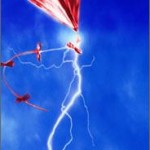 Franklin didn’t help matters with reports of some of his experiments with electricity. Franklin at one time wanted to record the results of electricity and living beings. So, he subjected mice, cats, and dogs to electric shocks, sometimes killing the animals in the process. He invited some of his colonial contemporaries to his house to attempt to , “…cook a turkey with electricity…” All were experiments which came from Franklin’s highly inquisitive mind, but not according to the Royal Society “…in keeping with the gentleman scientists endeavors of the time.”
Franklin didn’t help matters with reports of some of his experiments with electricity. Franklin at one time wanted to record the results of electricity and living beings. So, he subjected mice, cats, and dogs to electric shocks, sometimes killing the animals in the process. He invited some of his colonial contemporaries to his house to attempt to , “…cook a turkey with electricity…” All were experiments which came from Franklin’s highly inquisitive mind, but not according to the Royal Society “…in keeping with the gentleman scientists endeavors of the time.”
Ben was involved in so many areas, and had so many interests that I would often spend days reading about one thing or another about Franklin which had absolutely nothing to do with his kite experiment. Franklin’s inventions could fill hundreds of pages. Franklin was postmaster general, established one of the first libraries in the Colonies. He created the first bifocals, he perfected a better stove for colonials, which was named after him!
One of the things I noticed in my reading about Ben Franklin was that he enjoyed playing tricks and creating hoaxes. He used his publishing skills to get his points across.
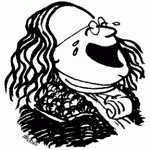 When he was 16 years old and apprentice printer to his brother James in Philadelphia, he created a fictitious “Silence Dogood” a colonial maid, that had much to say about the problems of life in Philadelphia. In 1729 Franklin published an essay under the pseudonym of B. B. concerning the issuance of paper money, he then wrote a rebuttal to B.B.’s article as the editor Ben Franklin, allowing Ben to get his point across.
When he was 16 years old and apprentice printer to his brother James in Philadelphia, he created a fictitious “Silence Dogood” a colonial maid, that had much to say about the problems of life in Philadelphia. In 1729 Franklin published an essay under the pseudonym of B. B. concerning the issuance of paper money, he then wrote a rebuttal to B.B.’s article as the editor Ben Franklin, allowing Ben to get his point across.
In 1732 Franklin printed the first issues of “Poor Richard’s Almanac. There were already six other colonial almanacs. But Franklin’s almanac was different. First of all Ben “invented” the author, Richard Saunders (Poor Richard) supposedly a poor farmer from rural Pennsylvania. Franklin’s biggest competitor was Titan Leeds (a real almanac maker) In the first printing of Poor Richard’s Almanac, Richard Saunders predicts the death of Mr. Leeds. Titan Leed, of course, is furious. Leeds writes that he requested no one to predict his death, or that he even knows anyone by the name of Richard Saunders. The publicity created by Leeds protests is, of course, exactly what Franklin hoped for. Franklin knew well the power of the press. His almanac was a success and is still reprinted today.
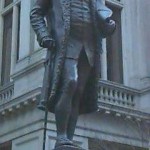 Franklin was not above using hoaxes to assist the Colonies in the American revolution. In 1782 he wrote an elaborate hoax report claiming that King George III of England had commanded Indians in the colonies to take the scalps of men, women and children in order to advance the interests of England in the American Colonies. This hoax helps to gain sympathy for the colonies from other European nations.
Franklin was not above using hoaxes to assist the Colonies in the American revolution. In 1782 he wrote an elaborate hoax report claiming that King George III of England had commanded Indians in the colonies to take the scalps of men, women and children in order to advance the interests of England in the American Colonies. This hoax helps to gain sympathy for the colonies from other European nations.
Franklin’s hoaxes were not confined to his publications and colonial opinions. He, on occasion, used them to advance his scientific ideas.
One of the main detractors of Franklin’s experiments was a distinguished scientist in England, by the name of William Watson. Watson and many of the other members of the Royal Society were royalty, dukes, counts, and lords of the realm. William Watson would not publicly recognize any of Franklin’s accomplishments, but Franklin was doing ground breaking experiments in the new science of electricity. Despite Watson’s royal ego, he realized that Franklin’s results were correct. William Watson actually, at one point, took credit for one of Franklin’s experiments, and claimed he had thought of the idea first.
Franklin was a bit angry, to say the least. Ben decided to “invent” an experiment that he hoped Watson would again attempt to plagiarize and steal. The experiment Franklin wrote about was called “The Sentry Box Experiment” Basically this involved placing a metal rod high above a small enclosure similar to a Sentry Box this rod would be connected to a wire that led into the structure Franklin’s descriptions of this experiment were vague and he was aware of the inherent danger involved. Franklin never states that he performed this “Sentry Box” experiment. His hope was that Watson would “steal” this experiment, and it would become an embarrassment to him. The Royal Society, and William Watson, publish Franklin’s Sentry Box Experiment. Watson does not steal this one (Personal error? Or did he really see through the hoax?)
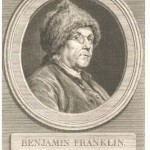 As the alleged experiment are circulated throughout Europe a scientist in Saint Petersburg Russia, by the name of Georg Rikhman learns of it. Rikhman is inspired to recreate the Sentry Box Experiment and installs a sixty foot metal rod on the top of his apartments in St. Petersburg. He begins to conduct “electrical” experiments similar to those that Franklin suggests. Many of Rikhman’s static electricity experiments produce excellent results, as the rod does attract “…static sparks even on a clear day…” Rikhman even creates a device to “…measure this sparking phenomenon…” and can be credited with the first attempts at constructing an “Ammeter”
As the alleged experiment are circulated throughout Europe a scientist in Saint Petersburg Russia, by the name of Georg Rikhman learns of it. Rikhman is inspired to recreate the Sentry Box Experiment and installs a sixty foot metal rod on the top of his apartments in St. Petersburg. He begins to conduct “electrical” experiments similar to those that Franklin suggests. Many of Rikhman’s static electricity experiments produce excellent results, as the rod does attract “…static sparks even on a clear day…” Rikhman even creates a device to “…measure this sparking phenomenon…” and can be credited with the first attempts at constructing an “Ammeter”
BUT as Rikhman continues his experiments the rod on his apartment is eventually hit by lightening while Rikhman is conducting an experiment and on July 26, 1753, he is struck dead. Scientists and doctors at the time couldn’t even figure out why Rikhman was killed, as there were no witnesses to the actual incident and no one really understood Lightening in the Sky. All they could find on examining Rikhman’s body was “…a red mark on his forehead and a hole in his shoe, with no other visible marks…” Did Franklin feel bad about this Hoax? He never mentioned it in any of his writings!
After seven months of study, my research has not found one accurate picture, diagram, or plan for Franklin’s electric kite. After reading through all of Franklin’s detailed notes and writings on his electrical experiments I found a surprising lack of details about the kite Franklin claims to have used in 1752.
I saw how his lack of recognition by the Royal Society of England was increasingly irritating to Franklin. I read in detail his enjoyment in perpetrating hoaxes to get his ideas across, to make a point, and to further his interests, and ideas in science, politics and philosophy.
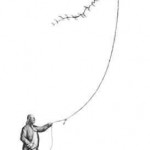 After hours of looking, in vain, for a painting, diagram, or picture of a depiction of Franklin flying a kite that would be flyable. A picture that would represent a kite from 1752. There seem to be too many questions about the “Electric Kite Flight”? Why did Franklin originally state that he had no witnesses to his 1752 kite flight which he later alters in his letter to Joseph Priestly, nearly fourteen years after the flight, to include his own son as witness to the flight? Why is Franklin so very evasive concerning his location for the kite flight, stating only, “..the experiment has succeeded in Philadelphia…”? And if Franklin knew that this was a ground breaking and historical electrical discovery, why did he wait almost four months to announce it? (July 1752 is the claimed date of flight and the article in the Philadelphia Gazette is printed in October 1752)
After hours of looking, in vain, for a painting, diagram, or picture of a depiction of Franklin flying a kite that would be flyable. A picture that would represent a kite from 1752. There seem to be too many questions about the “Electric Kite Flight”? Why did Franklin originally state that he had no witnesses to his 1752 kite flight which he later alters in his letter to Joseph Priestly, nearly fourteen years after the flight, to include his own son as witness to the flight? Why is Franklin so very evasive concerning his location for the kite flight, stating only, “..the experiment has succeeded in Philadelphia…”? And if Franklin knew that this was a ground breaking and historical electrical discovery, why did he wait almost four months to announce it? (July 1752 is the claimed date of flight and the article in the Philadelphia Gazette is printed in October 1752)
If you read all of Franklin’s writing on the “Electric Kite Experiment” never once does he actually say that he flew this electric kite. (Just as he never claims to have performed the Sentry Box Experiment.) I have finally come to the conclusion (and personal opinion) that, Benjamin Franklin DID NOT fly his electric kite!
I am positive that the electrical principal that Franklin proved by his alleged kite flight is correct! His theory that the small quantities of static electricity he was producing in his laboratory was exactly the same type of energy as lightening in a storm is a fact. That they are one and the same types of power, is a proven electrical theory!
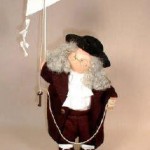 I believe that Franklin realized this connection between static electricity and lightening simply by using his amazing scientific and deductive reasoning. BUT I think Franklin also knew that no one, in scientific circles of the world would accept the words of “…a colonial shop keeper that didn’t even wear a powdered wig…” So he invented the hoax of the kite flight which proves his theory! A hoax that earns him the title in 1752 of electrical genius and the present title of “Worlds Most Famous Kiteflier”
I believe that Franklin realized this connection between static electricity and lightening simply by using his amazing scientific and deductive reasoning. BUT I think Franklin also knew that no one, in scientific circles of the world would accept the words of “…a colonial shop keeper that didn’t even wear a powdered wig…” So he invented the hoax of the kite flight which proves his theory! A hoax that earns him the title in 1752 of electrical genius and the present title of “Worlds Most Famous Kiteflier”
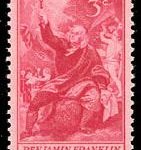 As a kiteflier with some experience, I decide that I had to prove or disprove the “Electric Kite” flight by trying to recreate Ben’s kite with the information he gave us in his writings. After all Franklin is depicted, countless times, in literature and paintings flying his kite. He is even depicted on a United States postage stamp, flying that “kite” (If you look at that stamp he is depicted with angels as ground crew, which, I think, tells you something) Franklin’s kiteflying expertise is taught to grammar school kids. There are hundreds of statues of Franklin with a kite in his hands. Everyone in the world believes that Franklin is the worlds most famous kiteflier because of what he claims happened in Pennsylvania in October of 1752.
As a kiteflier with some experience, I decide that I had to prove or disprove the “Electric Kite” flight by trying to recreate Ben’s kite with the information he gave us in his writings. After all Franklin is depicted, countless times, in literature and paintings flying his kite. He is even depicted on a United States postage stamp, flying that “kite” (If you look at that stamp he is depicted with angels as ground crew, which, I think, tells you something) Franklin’s kiteflying expertise is taught to grammar school kids. There are hundreds of statues of Franklin with a kite in his hands. Everyone in the world believes that Franklin is the worlds most famous kiteflier because of what he claims happened in Pennsylvania in October of 1752.
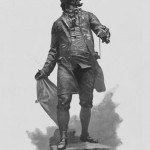 I realize that my opinion isn’t going to change anything, in the real world of “non-kitefliers” I do not think their going to remove any stone kites from Franklin statues, and Ben Franklin stores aren’t going to remove the kite from their corporate business cards.
I realize that my opinion isn’t going to change anything, in the real world of “non-kitefliers” I do not think their going to remove any stone kites from Franklin statues, and Ben Franklin stores aren’t going to remove the kite from their corporate business cards.
But as all of you who are reading this know, “A kite is only a kite, if it flies, otherwise its just a wall hanging”.
I have included some of my Franklin research links at the end of this article, study them and decide for yourself.
In Issue #39 of Kitelife I will present the FRANKLIN PROJECT. An experiment that kitefliers in the Midwest helped me to perform at Maumee Bay State Park in Toledo, Ohio in an attempt to answer the question of whether “Franklin actually flew his Electric Kite” in 1752.
Note and disclaimer: DO NOT attempt to fly a Franklin reproduction or any kite in a Thunderstorm! The author, project resources, Kitelife and it’s constituents hold no responsibility for misuse of the educational and historical information provided here, we encourage safe kite flying at all times!
Thanks for reading!
Al Hargus
Franklin Project References and Research Links:
Benjamin Franklin – Encyclopedia Reference
Benjamin Franklin History 1706-1790
Benjamin Franklin Experiments With Electricity
The Autobiography of Benjamin Franklin
Franklin: Experiments on Electricity
The Life and Times of Benjamin Franklin
About Franklin’s Kite
US History Boston Museum of Science
